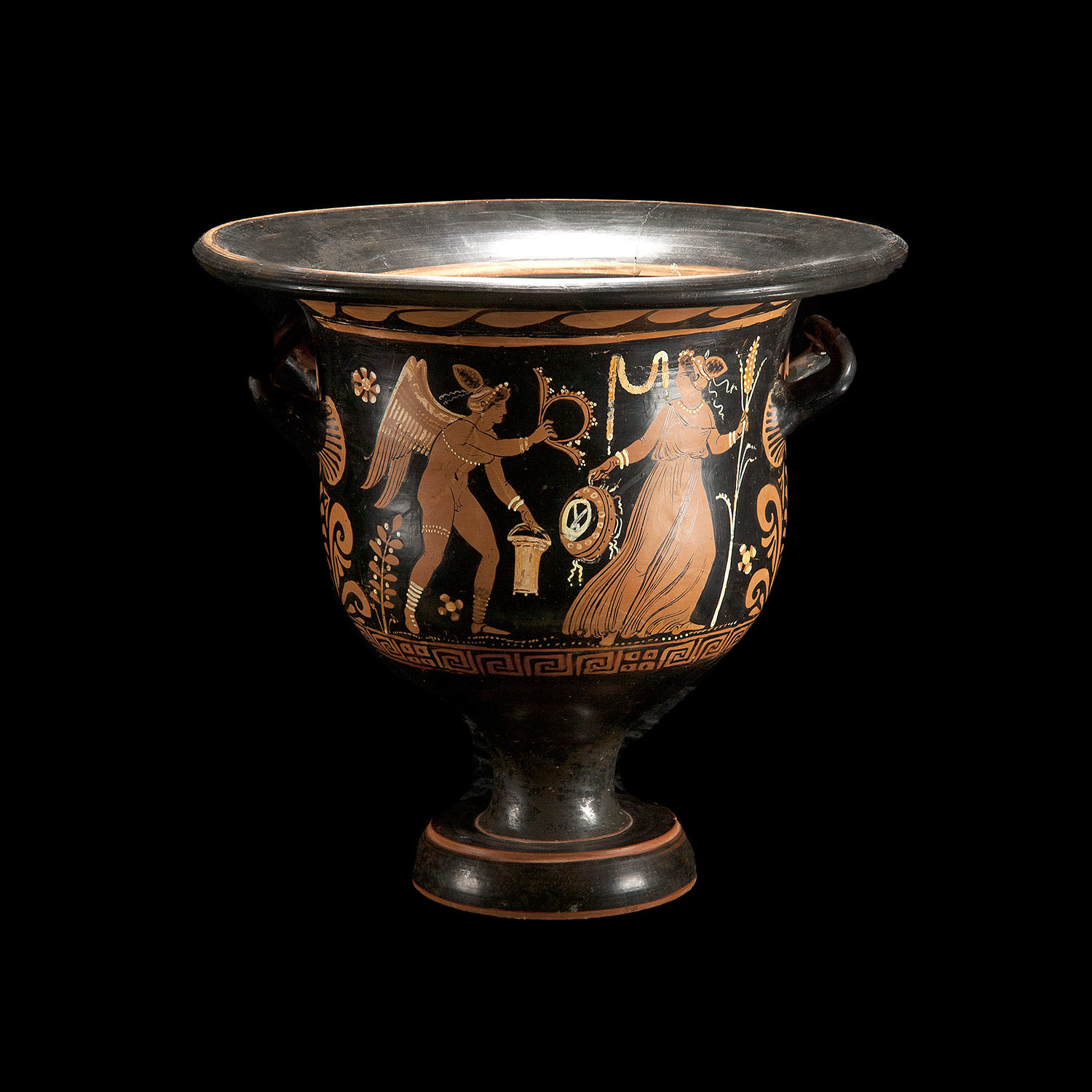.
Five proofs of God's existance according to St. Thomas Aquinas:
The Argument from Motion
In the first way, Thomas argues that anything that moves must be moved by another. For example, the eight ball is moved by the cue ball, which in turn is moved by the pool cue, which in turn is moved by the billiards player. But we cannot have an infinite regress of movers, so there has to be an Unmoved Mover to account for all other motion in the universe.
Let’s say that A is moved by B, and B is moved by C. What Aquinas means in the first way is that we cannot go infinitely on with this series of movers. A’s motion has to be accounted for ultimately by something that is not moved itself. In other words, there has to be a First Mover at the beginning of this chain of movers.
Now when Aquinas speaks of an "infinite regress," he does not mean a chronological sequence going back into time. In fact, the very concept of time is irrelevant to the notion of infinite regress. Rather, Thomas means that there must be something that accounts for all other motion, something upon which all other motion depends.
But the problem is with Thomas’s next statement: "We call this being God." As we will see with the rest of the five ways, this is an enormous logical leap. While it is correct that the A-B-C string of movers proves that there must be a First Mover, how do we know that it is identical to the First Mover of X-Y-Z? Couldn’t there be as many First Movers as there are lines of movers? How do we know that there is only one Unmoved Mover? And even if there is only one, how do we know that it still exists or that it is to be identified as God? The answers to these questions are not found in the first way itself.
The Argument from Efficient Causality
The second way is similar in structure to the first way and suffers from the same weaknesses: What proof do we have that there is only one Uncaused Cause that causes everything else? Moreover, what proof is there that the Unmoved Mover of the first way is identical to the Uncaused Cause of the second way? Assuming there is only one of each, couldn’t there be an Unmoved Mover that is distinct from the Uncaused Cause?
And even if we assume that there is only one, how do we know that this Uncaused Cause is one, immutable, eternal, infinite, omniscient, and omnipotent? These qualities are discussed later on in the Summa, but remember: Thomas assumes we’ve read everything prior but nothing after. So by attributing divine attributes to this Uncaused Cause at this point, we’re getting ahead of ourselves—and Aquinas too.
The Argument from Contingency of Being
The third way is the one that comes closest to an actual proof, but it is also one of the more problematic ones. Thomas argues that because everything’s existence is contingent—that is, it’s possible for any given thing to not exist—there must be a being whose existence is necessary and accounts for everything else. Otherwise, nothing would exist.
The problem with this argument is that Thomas offers no justification for the claim that without a necessary being nothing would exist. Couldn’t each being’s existence depend on another, which depends on another, ad infinitum? According to Thomistic scholar John Wippel:
While Thomas himself does grant the philosophical possibility of an eternally created world, he does so ultimately only under the assumption that there is also an eternal creative cause. While this is true, he cannot assume the existence of such a being at this point in the third way. . . . Why Thomas himself did not regard this as a serious flaw in his argument is something I have been unable to determine (The Metaphysical Thought of St. Thomas Aquinas, Catholic University of America Press, 465–67).
The Argument from Degrees of Perfection
On the surface, the fourth way appears to be an invalid argument, as its premise is inherently flawed. Thomas says that a hot thing is hot only insofar as it resembles something that is hot to the maximum degree. But when we say that a thing has a quality, we do not necessarily assume the maximum of that quality. When we call a man tall, we mean that he is taller than most men, not that he resembles the tallest man or tallness itself. In the same way, we call something hot because it is hotter than most other things, not because it resembles heat itself.
On this point, many Thomistic scholars are willing to cut Aquinas some slack due to his outmoded Aristotelian physics. After all, when we consider moral perfections in this light, the argument seems true enough: If we took 100 of our most despicable criminals and singled out the least offensive one, we would not call him "a good man" just because he’s not as bad as the others. We call a man "a good man" insofar as he approaches goodness itself. Thus, when we speak of perfections such as goodness, truth, and beauty, there does appear to be a maximum to which we refer.
The problem, though, is that this reasoning assumes a Platonic viewpoint. While it is easy for a Platonist to argue for vague, ethereal "forms" of moral perfections, such a move is not justified within Thomas’s empiricist framework. Msgr. Wippel points out:
Within Thomas’s distinctive metaphysical approach, even though a considerable Platonic and Neoplatonic influence must be recognized, today’s reader of this text may protest: The principle in question is not self-evident to him (Wippel, 475).
And, of course, even if it is proven that pure beauty, truth, and goodness exist, it is still a logical leap to say that they are one and the same, much less to call this being God.
The Argument from Final Causality
The fifth way may be the most misunderstood of the five. It looks to many modern Christian readers that Thomas is advancing Intelligent Design theory. In reality, though, Aquinas says nothing in the fifth way about how things in nature interact with each other; rather, he is concerned with how things gravitate toward their final ends.
Following Aristotle, Aquinas asserts that there are four kinds of causes: material, efficient, formal, and final. A final cause is the goal or purpose of an action. For example, the final cause of a sculptor building a statue might be the sculptor’s desire for a commission. A runner might have as a final cause getting exercise or wanting to get somewhere fast. Because no human ever performs any action unless he expects to gain some kind of benefit from it, it follows that every human action has a final cause.
But what about non-intelligent beings, such as plants and animals? They too seem to act toward an end (namely, their own self-preservation), but because they cannot perceive final causes due to lack of an intellect, Thomas says, they must be directed toward their ends by an intelligent being, which everyone calls God.
Apart from the difficulty that has plagued the other four (i.e., how do we know there’s only one?), Thomas makes a couple more leaps in the fifth way. First, he assumes that the intelligent being is the one doing the directing. Could it not be that the plant or animal is directing itself, albeit unknowingly? Or maybe a third party is doing the actual directing?
Furthermore, how do we know that this director is intelligent? We have not established the final cause of this being’s directing other things toward their final causes. In other words, why does it direct other things toward their final ends (assuming that they really are the final ends)? What is the final cause of all this directing? More speculation is required to answer all of these questions, none of which is contained in the fifth way itself.





